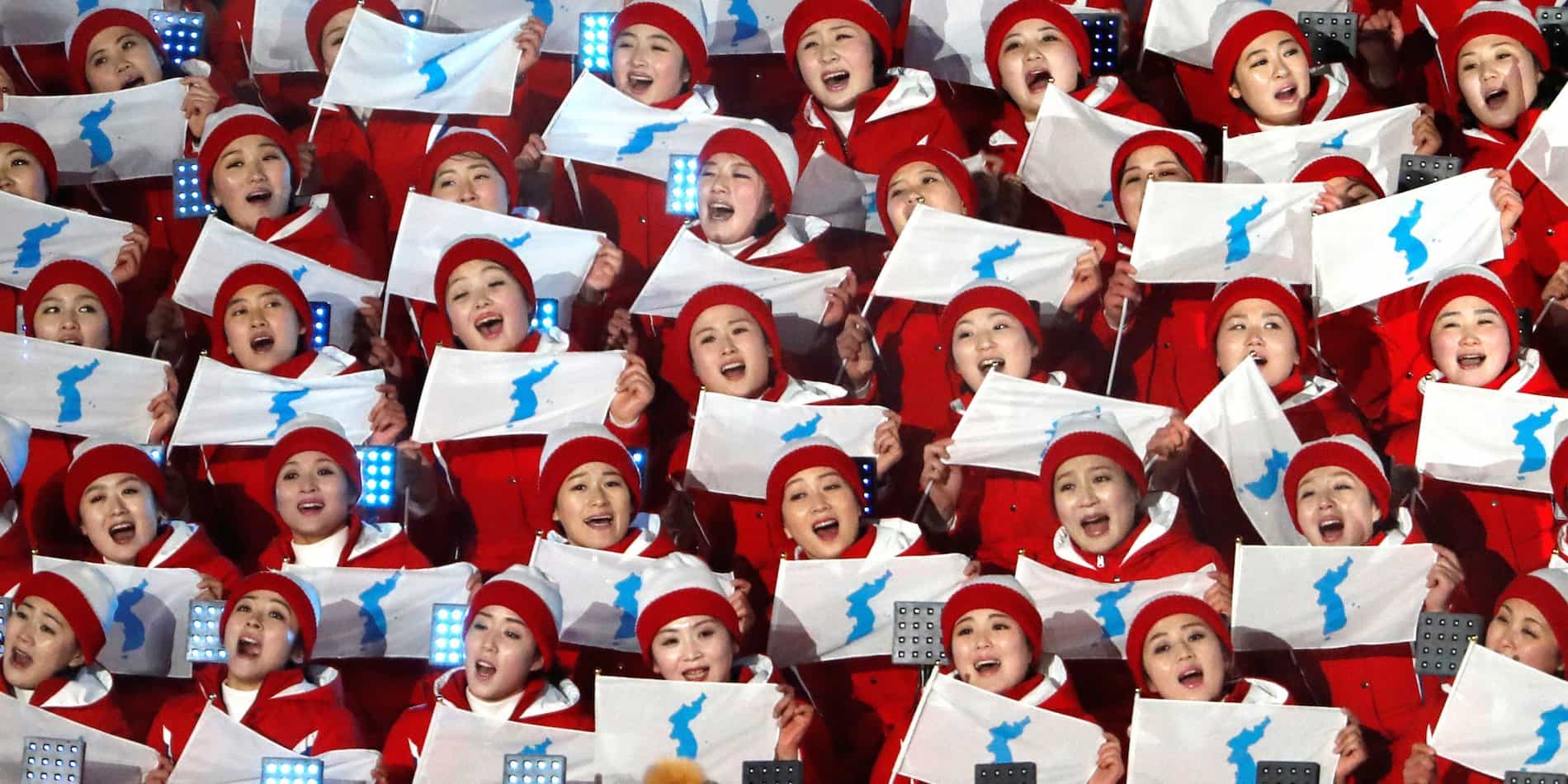A flag. A symbol of a solemn entity and a decoration of an officially recognised territory, isn’t it? An instance that warrants grins on faces, chuffed hearts, proud feelings and flexing of arms. A flag. The all-encompassing indicator that of a charted territory, recognised by the world and celebrated by its inhabitants. Moreover, a unified flag: that marks the culmination, adjoining and, melange of distinct entities.

Sadly, there hasn’t been one for Israel and Palestine and may never be, but there are chances even as rationalists dwell with hope to imagine for a united Korea. The two Koreas- North and South- have been at odds with one another for the longest time. Popular reportage only sees them offering a cold shoulder to one another.
But right before the historic summit between North and South Korea- one a tyrannical and autocratic regime and the other, a democratised entity- something changed. A sight hitherto rarely seen was evidenced with keen interest for the first time. There were dozens and dozens of people seen waving a unified Korean flag. Calls were out on either sides of the famous demilitarised zone’ border for a unified Korea. People want peace. It brings them together. It cajoles the spirit.

The keenly followed legendary inter-Korean summit had dozens of youngsters, particularly women volunteers posing with a unified Korean flag- a symbol of togetherness of both split Koreas; perhaps mythical in conception. And here’s why the flag really matters. It is believed by the experts to be a harbinger of good hope and a hope for change in the rarely existing bi-lateral ties between North Korea and South Korea. Lest it be forgotten that the two nations were once a singular entity before the grim events of the 1953 Korean war splat as much bad blood as enmity.
The flag- strategically placed on a dessert dish- is set to be served to both North Korea’s Kim Jong-un and South Korean President Moon in the historical summit. Could there be anything sweeter than the taste of oneness? Usually, the unified Korean flag is only waved and on full display during Olympic events. But this time around, the rare occurrence could well be compared to an Olympian meet between the two Koreas that have their backs against one another.

But away from the peaceful disposition the unified Korean flag is meant to serve for the two nations, it’s rather a concerning figure for Japan. Did you know why? After all, the flag features a set of disputed islands that lie between the region of Japan and South Korea. Located in the sea of Japan, both South Korea and Japan have claimed possession of a pair of islets that are actually nearly uninhabitable. In Japanese parlance, the islands are referred to as Takeshima while South Koreans refer to them as Dokdo.
But for there not to be any dispute, internationally the islands are termed as Liancourt Rocks. A conflict that to this day, in over a hundred year history hasn’t been solved sees Japan calling the occupied islands its own (when it had defeated Korea in a war) whereas Korea challenges Japan’s claim by suggesting the occupation of the islands was a forced and illegal one. So one wonders whether the unified Korean flag affably presented at the historic summit is aimed at the hope of the two Koreas coming together to raise a voice of dissent against Japan? None know for sure.


